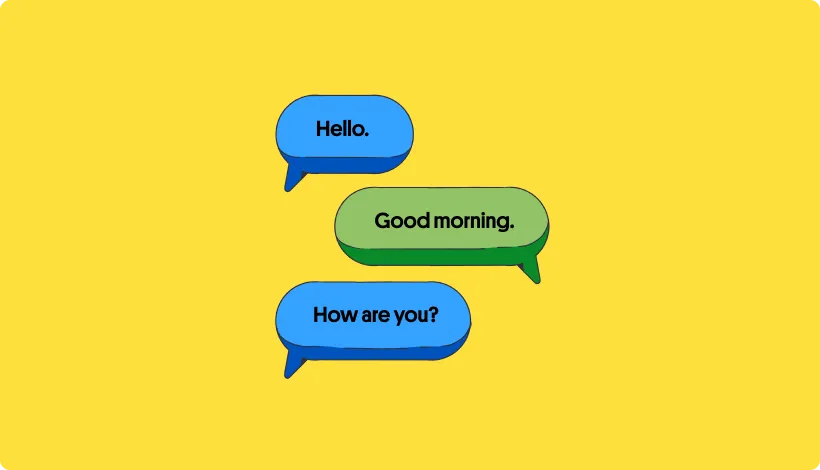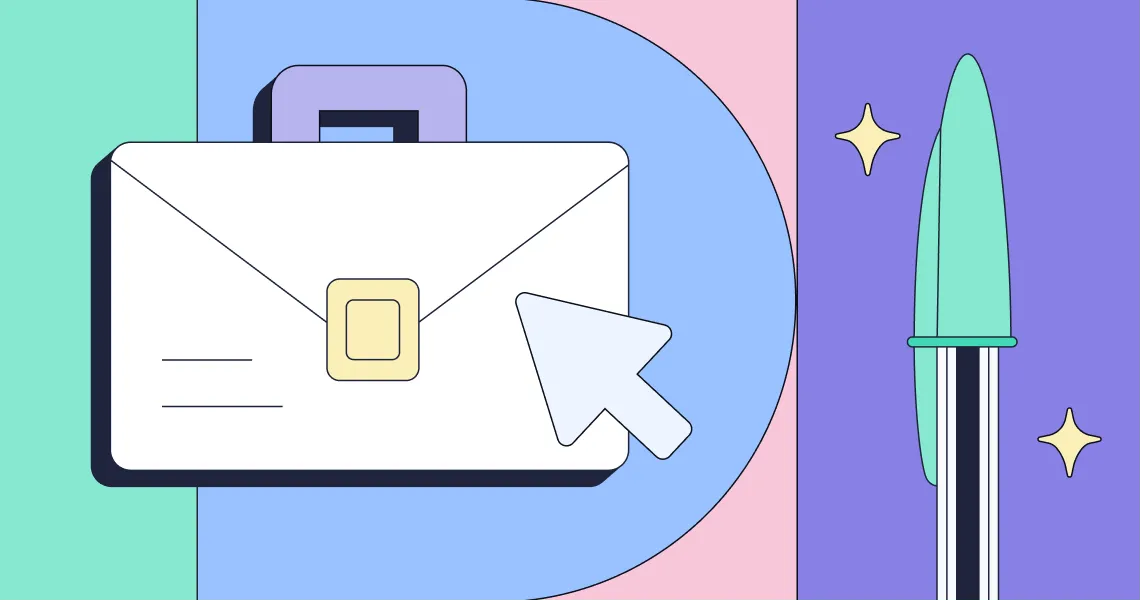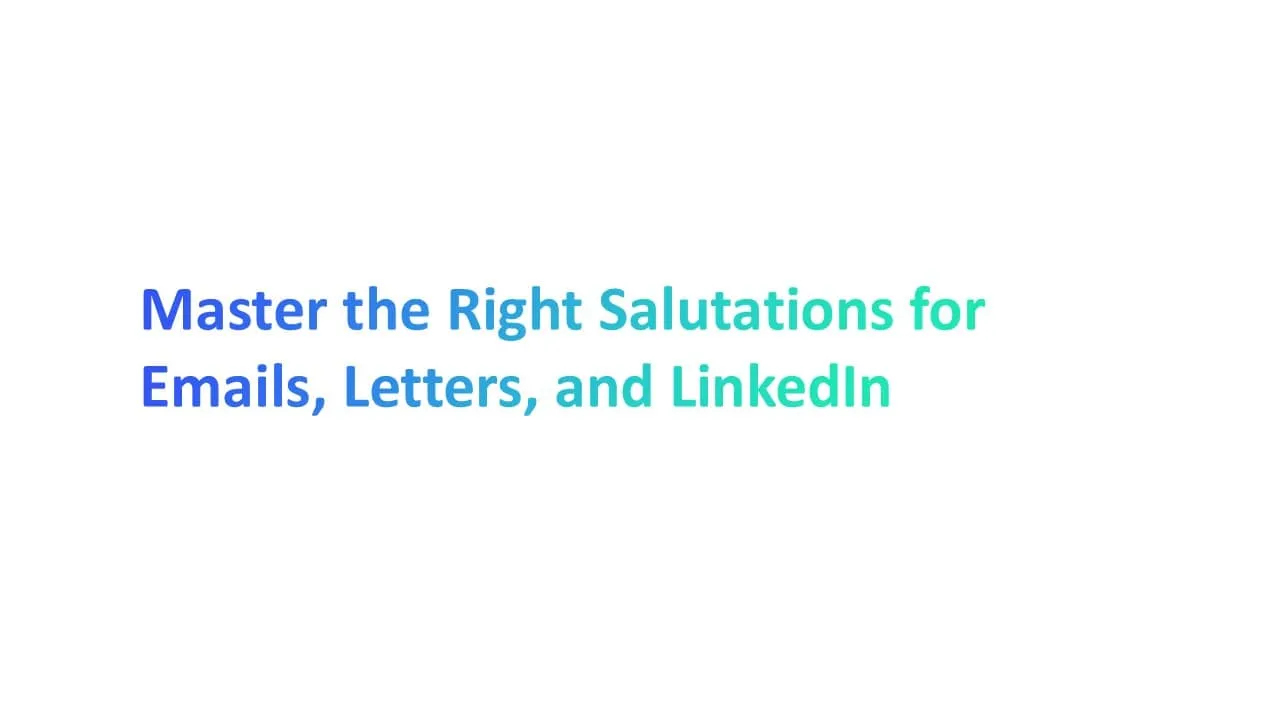Ever stared at a blank email wondering if “Hi,” “Dear,” or “Hey there” will hit the right tone? You’re not alone. A 2023 Grammarly report found that 72% of professionals say a poorly worded salutation makes them less likely to respond.
Whether you're writing a business letter, a LinkedIn message, or an email to a potential employer, using the right salutation sets the tone and shows respect.
In this guide, we’ll walk you through formal, informal greeting, and platform-specific greetings—plus the ones to avoid. You’ll finally know what to say and when to say it. Let’s make first impressions count.
What Are Salutations?

Salutations are the opening words or phrases you use at the start of a letter, email, or message. They help you greet the recipient and set the tone of your communication. Common examples include “Dear Sir,” “Hi John,” or “Good Morning.”
There are two main types:
- Formal salutations – used in official business letters or professional emails (like Dear Mr. Lee or Dear Sir or Madam).
- Informal salutations – used in casual or informal communication (like Hey or Hi Sarah).
Using the appropriate salutation shows respect, makes your message clear, and creates a strong first impression.
Why Is It Important?
Your salutation is the first thing someone reads. It tells them if your message is serious, casual, or somewhere in between. If you use the wrong one, your email or letter may come off as rude or overly formal.
In fact, a Grammarly survey found that 72% of professionals are more likely to respond to messages that start with the right greeting. That means getting it right can actually improve your chances of getting a reply.
Bottom line? Using the right salutation is a small step that makes a big difference in all kinds of business correspondence and personal messages.
Appropriate Salutation for Emails: Professional and Casual

Choosing the right word or salutation for an email sets the tone for the entire message. Here's how to strike the right balance, whether you're being formal or keeping it casual:
1. Start with the Context
Before you pick a salutation, ask yourself: Who am I writing to? Is it a professional email to your manager or a quick message to a coworker?
The context helps you choose the appropriate salutation. If you're writing an email for work, a job application, or an official business letter, use a formal salutation. If it’s a note to a teammate or someone you know well, a casual greeting may be fine.
2. Professional Salutations That Always Work
When writing a professional email greeting, go with email salutations that are clear and respectful. These are safe choices that work in almost any business setting:
- Dear Mr. Smith
- Dear Hiring Manager
- Dear Sir or Madam (only when the recipient’s name is unknown)
- Dear [Full Name] (when gender or title is unclear)
These email greetings are still common salutations in business today. They're direct, polite, and build trust from the first line.
3. Casual Salutations for Everyday Conversations
Not every email has to sound like a legal document. In fact, if you're messaging a coworker, teammate, or someone you know well, a casual salutation works better. It feels more natural and helps the conversation flow.
Here are a few options for some great email salutations you can use:
- Hi Sarah
- Hello there
- Good morning, James
- Hey Team
These are common, informal salutations used in informal communication. They're warm, simple, and still polite. But remember—casual doesn't mean careless. Always spell the recipient's name right, and avoid inside jokes unless you know the person well.
4. Avoid These in Most Work Emails
Some email salutations sometimes just don’t work—especially in a professional email. They can feel overly formal, outdated, or even awkward.
Here are a few to steer clear of:
- To Whom It May Concern – sounds cold and outdated
- Dear Sir – assumes recipient's gender and feels impersonal
- Dear Mr. or Madam – only use if you’re sure about their position and title
- Hey there! – too informal for business settings
These phrases may have been fine years ago, but today they can lower response rates. They lack personalization and don’t show much effort in knowing your recipient.
Pro Tip: Mirror the Recipient's Style
If someone signs off as “Best, John,” and says “Hi Alex” in their emails, it’s okay to match that tone. It builds rapport while keeping things natural.
Formal Salutations for Letters and Business Correspondence

When you're writing a business letter or reaching out in a formal setting, your salutation must reflect professionalism and respect. Here's how to do it right:
1. Stick to “Dear” – It’s Timeless and Trusted
“Dear” is the safest and most common salutation in professional writing. It’s used in everything from job applications to official business letters and business correspondence.
Here are examples:
- Dear Mr. Thompson
- Dear Hiring Manager
- Dear Dr. Patel
If you know the recipient’s full name or address, use it. If you’re unsure about their position or gender, stick with their full name to avoid mistakes.
What Experts Say: “Even today, ‘Dear’ remains a trusted way to begin a letter. It’s clear, neutral, and universally accepted,” says communication expert Karen Friedman.
2. Don’t Know the Name? Use These Safe Alternatives
If the recipient is an unknown recipient, avoid outdated phrases like “To Whom It May Concern.” It feels cold and distant.
Instead, try:
- Dear Sir or Madam – still used in formal UK writing
- Dear [Department] Team – great for company inquiries
- Dear [Job Title] – like “Dear Marketing Director”
- Dear Hiring Manager – safe for job applications
3. Always Use Full Names If You're Unsure About Titles
When you're writing a formal letter, and you don’t know the recipient's title—like Mr., Mrs., or Dr.—just use their full name. It’s simple and safe.
For example: “Dear Taylor Johnson” is better than guessing “Dear Mr. Johnson” if you're unsure about gender or marital status.
4. Avoid Casual Words Like “Hi” or “Hello”
In a formal salutation, don’t start your letter with words like “Hi” or “Hello.” They’re a friendly greeting but too casual for most business letters or job applications.
Here’s what to avoid:
- “Hi Mark”
- “Hello Team”
- “Hey there”
Instead, use:
- “Dear Mr. Williams”
- “Dear Hiring Manager”
5. Formal Salutation = Strong First Impression
A good formal salutation does more than say hello. It shows care, effort, and that you understand the tone of the situation.
Using “Dear” plus the correct name, title, or department gives your message a strong start. It tells the recipient you took time to write properly.
Is "Dear Sir" Still Appropriate?
While “Dear Sir” was once a go-to for formal letters, it's now considered outdated and exclusionary in most professional settings.
Why It’s Problematic Today:
- Assumes gender – In today’s inclusive workplace, assuming the recipient is male can be off-putting or offensive.
- Feels impersonal – It signals that you haven’t taken the time to find out who you’re writing to.
- Reduces response rate – Many hiring managers and executives view it as lazy or old-fashioned.
Better Alternatives to “Dear Sir”:
- Dear Hiring Manager – Ideal for job applications when the contact is unknown.
- Dear [Department] Team – Works for company inquiries (e.g., Dear Marketing Team).
- Dear [First + Last Name] – A great option if you’re unsure about titles or gender.
- Dear Sir or Madam – Still used in the UK but should be a last resort.
LinkedIn Salutations: Making the Right First Impression

LinkedIn messages are a unique mix of professional and personal. Your salutation should reflect that balance—warm, respectful, and relevant to meeting your goal.
1. Always Use the Person’s Name
This is rule number one: use the person’s full name. Don’t start with “Hey there” or “To whom it may concern.” That sounds lazy and cold.
- Say: “Hi Jordan Patel”
- Not: “Dear Sir” or “Hi”
Using someone’s name shows respect. It feels personal. On a site like LinkedIn, where you usually see the recipient’s name, there’s no excuse not to use it.
2. Keep It Short and Friendly
LinkedIn isn’t a formal form of business letter. It’s more like a mix of professional and friendly communication. Your greeting should reflect that balance.
Keep your salutations short:
- “Hi Sam”
- “Hello Angela”
Use a simple phrase that sounds human, not robotic. Don’t copy-paste long intros. Write like you’re speaking to a real person.
3. Avoid Overly Formal Openings
This isn’t the place for “Dear Madam” or “Dear Mr. Thompson.” That kind of formal salutation might work in a cover letter, but not in a casual LinkedIn message. These overly stiff greetings feel out of place and may hurt your chance of building a real connection.
4. Don’t Skip the Salutation Entirely
It may be tempting to jump right into your message, but skipping the salutation can feel cold or careless. Every person reading your message wants to feel like they matter.
Even a simple “Hi Alex” works better than starting with just a request or link. It builds goodwill and shows you’re not blasting the same note to a large group of people. Think of a salutation as your handshake on LinkedIn. Don’t leave someone hanging.
5. Mirror Their Profile Tone
Take a quick look at the person’s profile. Do they sound friendly? Formal? Casual? Match their tone. If they say “Warm regards” in their bio, using a similar email salutation like “Hello” or “Hi [First Name]” makes your message feel natural.
Avoid being too formal if their profile feels casual—and don’t be overly friendly if their tone is clearly professional.
6. Mention a Mutual Connection or Interest
People respond better when there’s a reason to connect. Instead of just sending a blank note, mention something or someone you share.
Here are examples:
- “I saw your post about team culture—great points.”
- “We both know Jamie from the UX group.”
- “I noticed we attended the same webinar on workplace leadership.”
When to use a Formal Salutation vs. an Informal Salutation
How to Format a Salutation Correctly
Getting your salutation right isn’t just about choosing the right words—it’s also about how you format them. A small mistake in structure can make your message look sloppy or unprofessional. Here's how to nail it every time:
1. Always Capitalize the First Word and the Name
This sounds simple, but many people forget it. Whether it’s a formal salutation greeting like Dear Mr. Thomas or a friendly Hi Lisa, the first word and the person’s name must start with capital letters.
2. Use a Colon or Comma (Depending on the Medium)
If you’re writing a business letter, use a colon:
👉 Dear Mr. Gomez:
In an email salutation, a comma is perfectly acceptable:
👉 Hi Taylor,
This small formality shows you know the difference.
3. Add a Line Break Before the Body
After your salutation, always hit “Enter.” It helps the reader begin the message without confusion. A clean layout respects your recipient and improves communication.
4. Include the Correct Title (If Known)
Use Mr., Ms., Dr., or another correct title when addressing someone. Don’t assume—especially if the recipient's gender or title is unclear. When in doubt, use their full name.
5. Avoid Excessive Punctuation or Emojis in Salutations
Never write: Hi!!! 😊 This looks unprofessional—especially in a professional email or official business letters. Keep it clean and neutral.
6. Double-Check Spelling
A wrong name is the fastest way to lose trust. Misspelling a person's name can offend, especially if you're messaging someone from a different group of people or culture. Triple-check it.
What Experts Say: “The best salutations start with accuracy. Miss the mark, and your message may never get read.” — Forbes Communication Council
15 Common Salutations with Examples You Can Copy
Salutations You Should Avoid in Any Situation
Not all greetings are created equal. Some salutations can feel outdated, overly casual, or just plain wrong. Here are the ones you should steer clear of—no matter who you’re writing to:
1. “To Whom It May Concern”
This may seem polite, but it's outdated. It shows you didn’t find the recipient’s name. That can come off as lazy or impersonal. If you're writing for the first time, try to look up the person or use their title.
2. “Hey There” or “Yo”
Too casual. It sounds like you're texting a friend. Avoid it in all formal communication, especially with business contacts or unfamiliar people.
3. Using Only the First Name Without a Greeting
Jumping straight into the message without a salutation feels abrupt. It lacks respect and may confuse the reader.
4. Misspelled Names or Wrong Titles
Nothing ruins your email faster than calling someone the wrong name. Always double-check spelling and formality.
5. Generic Openers Like “Greetings”
“Greetings” is cold and robotic. Instead, use a warm and appropriate salutation like “Dear [Full Name]”.
6. Overly Playful Greetings
“Happy Monday, Superstar!” might sound fun, but it feels off in a professional setting.
7. ALL CAPS or no caps
“HELLO JANE” or “hi john” looks careless. Use correct capitalization and punctuation to show effort and goodwill.
Closing Salutations: Ending Strong with the Right Tone
Just like your opening, how you end your message matters. A good closing salutation helps wrap up your communication with clarity, professionalism, and warmth.
Whether you’re emailing a hiring manager, sending a thank-you message of gratitude, or replying to a LinkedIn connection, your closing line can shape the final impression.
When to Use Formal vs. Informal Closings
- Formal Closings (for business, job applications, or first-time outreach):
- Sincerely
- Best regards
- Yours faithfully (UK usage when name is unknown)
- Respectfully
- Informal Closings (for colleagues, friendly clients, or peers):
- Best
- Cheers
- Thanks again
- Warmly
A Few Rules to Keep in Mind:
- Match the tone of your opening. If you start with “Dear Mr. Lee,” don’t end with “Cheers.”
- Add your name underneath and include your professional title or contact info, especially in business emails.
- Avoid overly casual closings like “Later” or “Take care, buddy” unless it’s a personal message.
Strategies to Identify the Correct Contact Person in Email Salutations
Identifying the right contact person for your email is crucial for ensuring your message is read and responded to by the appropriate individual. This section provides a few options to help you pinpoint the correct recipient:
1. Research the Organization's Structure
- Official Business Letters: When writing formal communications, understanding the hierarchy can help address the right person, especially in large organizations.
- Business Correspondence: For general inquiries or proposals, identifying department heads or managers can be effective.
2. Utilize Professional Networking Sites
- LinkedIn Searches: Platforms like LinkedIn allow you to search for individuals by name, title, or department, giving you insights into the correct contact person within a company.
3. Check the Company Website
- Contact and About Us Pages: Most companies list key employees and their roles on their website, which can be invaluable for finding the right salutation for your email.
4. Email Directories and Reception Inquiries
- Ask for Help: If you're unsure, a polite email or call to the company's reception can yield the necessary information. Phrases like "Could you guide me to the right contact for [purpose]?" can be helpful.
5. Review Previous Correspondence or Signatures
- Email Signatures: Often, email signatures contain job titles and departments, which can clue you in on the appropriate salutation for future emails.
6. Social Media and Publication Mentions
- Social Media Profiles: Professionals frequently list their roles and responsibilities on social media, which can be a goldmine for identifying the right contact person.
- Industry Publications: Articles or press releases often mention individuals by their full name and position, offering another avenue to ascertain the correct salutation.
7. Networking and Referrals
- Utilize Your Network: Colleagues, industry contacts, or mutual connections can often provide the name or title of the person you need to contact, ensuring your email salutation is accurate.
Cultural Considerations in Salutations: Why One Size Doesn’t Fit All
Salutations aren’t always universal. What feels friendly in one culture might seem too casual—or even rude—in another.
For example:
- In Japan, using someone's last name with -san (like Tanaka-san) is respectful and expected in business.
- In Germany, professional communication still leans toward formality, often using “Sehr geehrte/r” followed by a title and surname.
- In contrast, in the U.S., especially in tech or creative industries, starting with a simple “Hi [First Name]” is totally acceptable—even with new contacts.
When messaging internationally, keep these tips in mind:
- Research the recipient’s country norms before choosing a salutation.
- If unsure, default to formal. It’s easier to relax your tone later than to recover from sounding too informal.
- Pay attention to titles, gendered language, and name order—they vary widely across cultures.
Conclusion
Choosing the right salutations isn’t just about manners—it’s about making every message count. Whether you’re writing a formal letter, a LinkedIn note, or a quick email, starting with the right greeting builds trust and shows respect. From “Dear Hiring Manager” to “Hi Sam,” every salutation you choose shapes how you're remembered. Now that you know what works (and what doesn’t), you’re ready to open every message with confidence.





.jpg)

.jpg)
